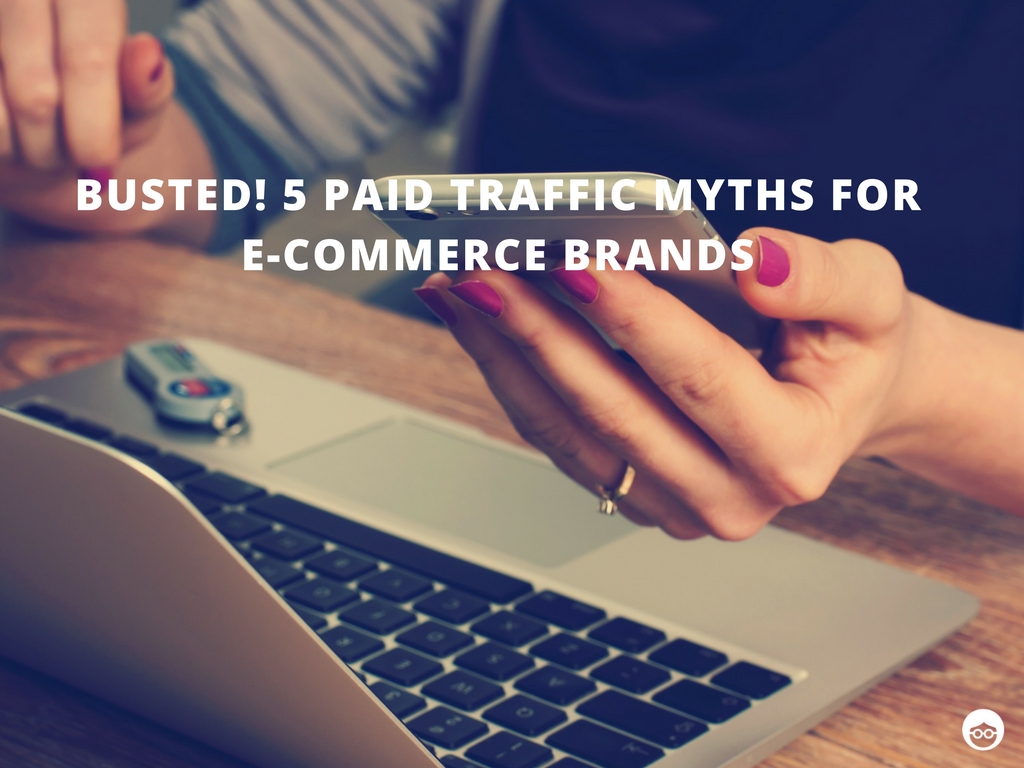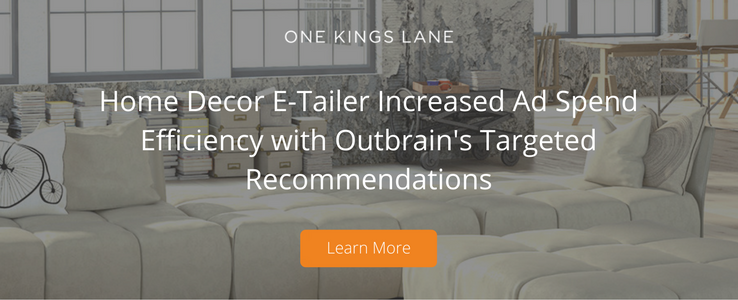Busted! 5 Paid Traffic Myths for eCommerce Brands

The goal of content marketing is to inform audiences, engaging with them as they search for a solution to the problem your product solves. This requires being in the right place at the right time when they are in that moment of need, regardless of device-type or location.
As a result, we invest a lot in search engine optimization (SEO) in an effort to get our content to rank high in the search engine result pages (SERPs) for keywords our ideal customers use when looking for the kind of services we offer. It’s an art, really, and it’s becoming one of the most effective ways of reaching target audiences within the era of search-dominated shopping.
But, there’s a lot more to this strategy than ranking organically. If this is largely what you are spending your time on, you could be missing an increasingly effective way to get in front of prospects by means of paid traffic generation.
Organic Traffic vs. Paid Traffic
It’s a common mistake for marketers to assume organic traffic is better than paid traffic. This makes sense when considering the value of someone naturally searching for your brand, products, or solutions. However, before you dismiss paid traffic, read some of the paid traffic myth-busters below. I think you’ll find that paid can also be highly effective with generating more traffic, leads, and sales.
Myth #1 Organic Traffic is Free
Unless whoever does your keyword research, content development, SEO tagging, blogs, landing pages, social media promotion and monitoring, and emails is doing it all for free, you’re paying a lot for your organic traffic.
As Nikki Wardle writes in Tribute Media’s blog, “Do NOT fool yourself into thinking that SEO is free. No matter how you look at it, SEO comes at a cost. Whether it’s your own time, or hiring an outside vendor to manage your SEO strategy, SEO does come with a cost.”
SEO feels free because the cost is hidden in the salaries of your internal marketing team or the agencies you pay to do this stuff.
Tip: Google ranks ads just like it ranks search results. Ads that don’t get clicked don’t show up. To boost organic search results, research the ads that show up in SERPs around the keywords that are important to you and create similar content.
Myth #2 People Avoid Ads
Many marketers project their own distaste for ads onto others. The reality is, though, that when people actually want to buy something, they’ll click on an ad before the clicking on organic results.
Fahad Muhammad at Instapage found that “Over 60 percent of users with the intent of purchasing a product click on PPC ads, even when presented with a wide array of organic search results.”
Why?
Because they are more likely to land on an eCommerce page where they can quickly get the info they need to make the purchase they are looking for.
Real customers click on ads first, so high-ranking organic traffic isn’t necessarily more promising.
Tip: To optimize a paid ad use some of the same methods you would use to optimize a web, says Amy Hourigan of MindVision. Test “the ad copy with various keywords and then running analytics to see which ones are generating more leads, she says.”
Myth #3 Organic Traffic is More Valuable
At first blush, this seems like a no-brainer. Someone that finds you on their own would appear to be more genuinely interested in your product, but it’s not always true. At least not in the world of B2C eCommerce.
Unbounce founder Oli Gardner points out that “50 percent of people arriving at a retailer’s site from paid ads are more likely to buy than those who came from an organic link.” A study by Advanced Web Ranking found that presence of ads reduces the click-through rate of the first organic result on the page by around 30 percent.
Tip: To capture the people that are ready to buy, create organic content that functions like an ad — that clearly links to an opportunity to purchase your product at the best price.
Myth #4 Paid Search is Mercenary — Traffic Goes to the Highest Bidder
Not true, as Google ranks ads just like it does content and ads users find most beneficial rise to the top. So do most ad platforms.
Here’s how: Google uses Ad Rank to determine an ad’s position. Ad Rank is “a value that’s used to determine your ad position (where ads are shown on a page) and whether your ads will show at all.” Ad Rank is calculated using your bid amount, the components of Quality Score (expected clickthrough rate, ad relevance, and landing page experience), and the expected impact of extensions and other ad formats.
There’s a positive in this, too, according to Google. “So even if your competition has higher bids than yours, you can still win a higher position at a lower price by using highly relevant keywords and ads.”
Quality and user experience matter in ads as well as for content.
Tip: Two key factors in Google’s ad ranking are the relevance of the ad to the keywords, and the quality of the landing page experience. Make sure you use negative keywords in your search to help ensure that your ad isn’t presented to irrelevant audiences.
Myth #5 Organic Search Delivers Better Customer Experiences
This is rapidly changing.
Many believe digital advertising will overtake organic SEO as advertisers get better at targeting and delivering ads people want, where they want them. Douglas Karr writes in MarketingTechBlog.com that “65 percent of users receiving push notifications open them.”
Marketers have a chance to delight customers by delivering them offers as they shop.
Think about it this way — with SEO, you wait for a customer to search for you. With paid advertising, you can find your customers and deliver the offer they’re looking for before they even search.
Tip: Use technology like GPS and geo-targeting to find customers before they look for you.
The Right Tool for the Job
Organic traffic and SEO are incredibly valuable when it comes to building a strong traffic flow to high-quality content, building long-term relationships with customers and prospects. It works slowly, but with even a little success, you will see the results start to snowball in growth.
Additionally, paid traffic should not be dismissed and can be just as effective as SEO-driven traffic at engaging your target audiences, and in some cases, it can be more effective. The goal is always to get your product or offer in front of the right person at the right time. Paid advertising platforms give you the power to do just that — narrowing your target audience based on a host of factors beyond demographics. For example, what they like, where they shop, what they read, and more.
While some of the rules of SEO apply, in general, advertising relies far less on the gaming the search system to get found. If you’re paying to promote a piece of content, for example, you don’t have to worry about appealing to a wider audience. You’re finding your audience before you start.




